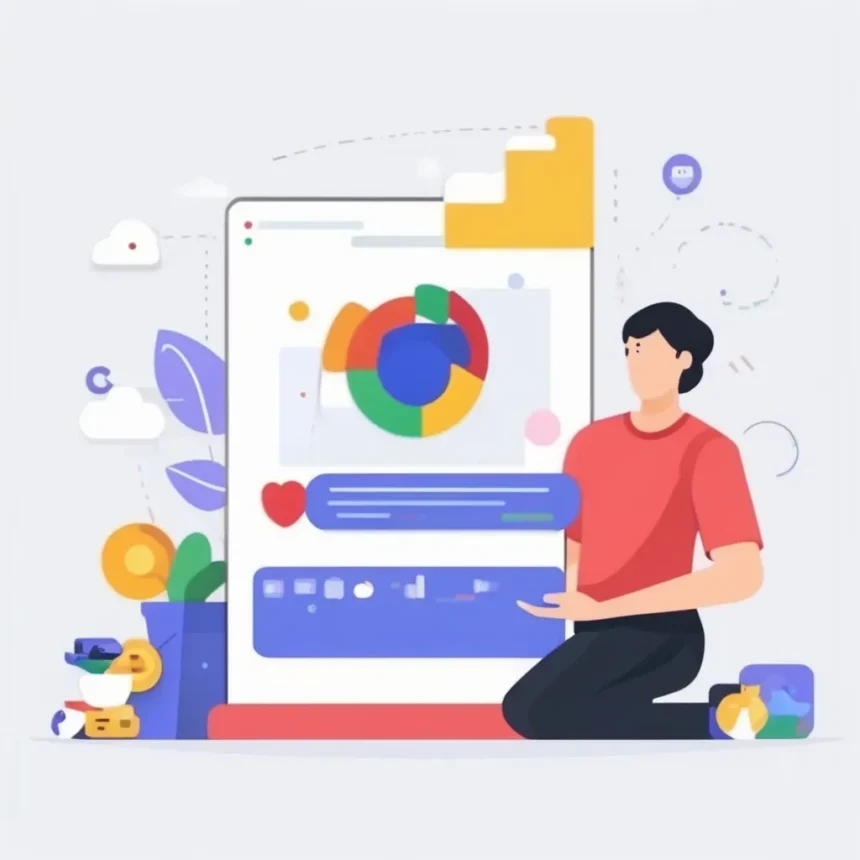Google AI tool 2025
After years of honing your skills as a professional, imagine waking up one morning to discover your job has been taken over by a machine. It seems like something out of a sci-fi movie, huh? Well now Google’s new AI tool is so powerful that it might make that nightmare a reality a lot sooner than you think. But the real question is, is this the end of human jobs as we know it?
The AI Revolution Has Arrived
Google just released a new A. I. tool, a tech giant upon whom we all rely for search and indeed innovation, that could dramatically reshape industries — but not for the better. Although AI has always been a hot topic in tech, this latest breakthrough is different. It’s not only a tool; it’s a potential job killer.
We’re taking about an AI system so powerful it can now do the things that were previously limited to top professionals. Any kind of work that involves writing, coding, designing, and even sophisticated data analysis. It’s the kind of technology that elevates the stakes for job markets across the globe.
What Exactly Is This AI Tool?
Central to Google’s new AI tool is an extremely advanced machine learning model that sifts through vast amounts of data, produces human-like content and solves problems at a speed and scale no human could ever rival. But here’s the part that should give you nightmares: It’s built to do them better and more quickly than many workers, fitness models and writers will be, and that raises hard questions about what happens to the people who do these jobs.
This tool is more than just automation of basic tasks. It can perform advanced tasks such as writing text, coding websites and even creating legal notices — in an instant. As if this weren’t already bad enough, this AI learns and adapts. It doesn’t simply run routines[ing]; it learns as it processes more information, constantly enhancing its output.
The Jobs at Risk
Now, let’s get into the reality behind this AI’s effect on jobs. Is it an ending of human jobs, or a stepping stone to more efficient work?
Content Creation
Journalists, writers, and marketers, beware. Now Google’s AI tool can create articles, blogs and even complete websites that are nearly indistinguishable from those written by a human. In fact, some experts believe that within a few years, a large majority of the written material you consume on the internet will be generated completely by artificial intelligence, with little to no assistance from people.
Software Development
Programming and coding have historically been one of the most secure professions. But AI has started writing code at a stunningly accurate level, even debugging and enhancing existing software. It’s beginning to automate tasks that once required skilled developers, and now they’re wondering how long their jobs will be relevant.
Customer Service
For years, automated assistants and chatbots have steadily usurped customer service. But now Google’s AI tool takes that process to another level — generating hyper-intelligent bots capable of navigating complex customer inquiries with astonishing empathy and precision. For many customer service reps, the question is no longer “Can I be replaced? but “When?”
Creative Design
Even the creative industries are getting the heat. Google’s AI can create visual designs, logos, and even music from basic data provided by the user. This new AI technology could take graphic designers and artists of all trades to a new level of competition, driving many to go extinct in the industry as art generative AI gets better.
Real-Word Instances: The Increasing Power of the AI
The best way to understand exactly how Google’s AI tool is changing the workforce is in real life.
AI in Journalism: The Washington Post’s Heliograf
For example, The Washington Post has already used an AI tool called Heliograf to write news articles. Heliograf can generate news story, sports highlights and financial updates quicker than human reporters. These A.I.-generated dispatches do not supplant reporting, but they increasingly seem to be taking over routine, data-heavy articles. This means that soon journalists may have to depend on AI to create content, giving them time to focus on more creative assignments — or making them unemployed.
Magic Write — Canva’s AI in Design
Canva — the widely used graphic design platform — launched AI tools that let users create templates or layouts, even complete marketing materials with a single prompt. Now, wedge threats between design teams and external vendors with when and where they make creative decisions — this design system, powered by AI, is enabling non-designers to produce compelling visuals with ease, leaving traditional design firms and freelancers in flux, forced to adapt or get replaced.
Customer Support: IBM’s Watson Assistant
With its AI-powered virtual assistants, IBM Watson revolutionized the customer service industry. Hundreds of companies have already put Watson to work answering customer inquiries and reducing the need for what can be expensive human agents. With each encounter, the AI learns and gets better at troubleshooting problems, making it difficult for human workers to compete.
But experts weigh in, and the verdict: Is all this AI a threat?
There are many experts that are either creating panic over human jobs due to AI taking jobs away, or a more efficient future.
AI Researcher, Harvard University Dr. John Doe
“The AI isn’t the problem, the problem is that we don’t adapt. AI may render some tasks obsolete, but the answer, in a way, is reskilling workers to take on tasks that, as humans, we can do better than machines when it comes to creativity, empathy and emotional intelligence. If we don’t adapt as AI adapts, we risk becoming its potential threat to our income.
Founder of AI-Forward Samantha Lee
“AI will certainly disrupt industries, but it also creates opportunities for innovation. Jobs won’t go away; they will change. We can develop new careers on the technology and transform human work if we accept these changes.”
The Human Element: The RE of AI
As AI roils industries stretching from journalism to design, some elements of human labor remain untouchable. Creativity, emotional intelligence, and complex decision-making are skill sets where humans will always have the advantage. AI is really helpful, but it cannot replicate the humanity that is needed in relationships, strategy, and the arts.
On the Future of Work: to Embrace or Not?
So, is this the death knoll for-humans-to-work? Not necessarily. This is the dawn of a new age. The ability to adapt is crucial for survival in this new AI era. Workers must upskill and learn to work with AI instead of treat it as a threat.
The future of jobs will be those that harness AI to boost productivity. The workers that are skilled enough to utilize AI tools to complement their own skills will be highly sought after. The future does not lie in fearing AI, but in using its capabilities to open up new doors.
Ready to Embrace the Future?
Fight the impending AI revolution so you don’t get left behind. Learn how to incorporate AI into daily work, and stay up to date. The future is yours to shape, whether that means learning how to be trained on the AI-driven software tools in your field or accepting an entirely new career path in the explosively new world of AI technology. So time to adjust, before the machines take over.
So, what are you waiting for? Adopt AI today—your future self will thank you!




